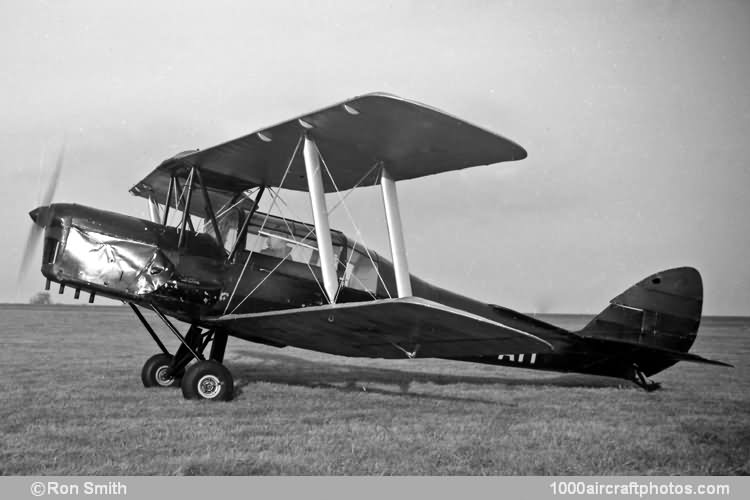The Jackaroo was essentially a Tiger Moth in which the center fuselage had been widened to accommodate four seats, in two pairs. The overall width of the fuselage was 36 in (0.91 m) compared with 23.5 in (0.60 m) on the standard Tiger Moth.
Originally, the basic Jackaroo was designed as a dual-purpose aircraft, with interchangeable top deckings, so that it could be adapted into a single-seat agricultural aircraft with a hopper for 550 lb (250 kg) of dust for crop-spraying and top-dressing duties. This configuration was eventually made only to special order, as the standard four-seater was found to be readily convertible for agricultural duties by removing the two starboard seats and inserting in their place either a dust hopper or spray-tank.
Normal welded steel-tube construction was used for the new center fuselage section, and an additional steel-tube bay was inserted in the fuselage forward of the center section wing struts, so that the engine was mounted further forward to offset the greater weight aft of the C.G. The new structure picked up on existing fuselage fittings and the dual controls were maintained in tandem. Entry into the enclosed cabin was by forward-hinged doors.
No modifications were made to the wings, interplane struts, tail surfaces or rear fuselage. But the wider fuselage required an extension of the center section by 12.5 in (0.32 m) and this had the effect of increasing the wing span and the wing area). Similarly, the landing gear track was increased to 6 ft 3.5 in (1.92 m). The wheels were fitted with simple mechanical disc brakes of Goodyear design, and a tail wheel could be fitted to production Jackaroos in place of the usual skid.
The standard power plant, built around a 130 hp de Havilland Gipsy Major I engine, was retained, the only modification being a simple revision of the cowling to provide additional cooling for tropical operation. A Fairey-Reed two-blade metal fixed-pitch airscrew could be fitted. Forward view from the cockpit was improved by lowering the top of the decking by 4.5 in (11.4 cm).
By 1958 the company claimed 100 orders and a production rate of six aircraft a month, however, by February 1960, only nineteen Jackaroos had flown, of which one (G-APOV) had been converted by Rollason Aircraft & Engines Ltd. at Croydon, and eighteen had received their CofA. An additional number of registrations had been reserved by the company, reportedly these were either used for unconverted Tiger Moths, or not taken up. See list below.
In 1961 the Jackaroo Aircraft company name was changed to Paragon Aircraft Ltd, the unfulfilled intent being to produce a light four-seat aircraft called the Paragon E.S.3175 Paragon."
Span: 30 ft 4.5 in (9.25 m)
Length: 25 ft 9 in (7.85 m)
Height: 8 ft 10 in (2.69 m)
Wing area: 246.7 sq.ft (22.92 sq.m)
Empty weight: 1,360 lb (617 kg)
Max weight: 2,181 lb (989 kg)
Max speed: 104 mph (167 kmh)
Cruise speed: 85 mph (137 kmh)
Climb: 600 ft (183 m)/min
Range: 250 mls (400 km)
|
Type |
Reg. |
Ex |
C/n |
CofA |
